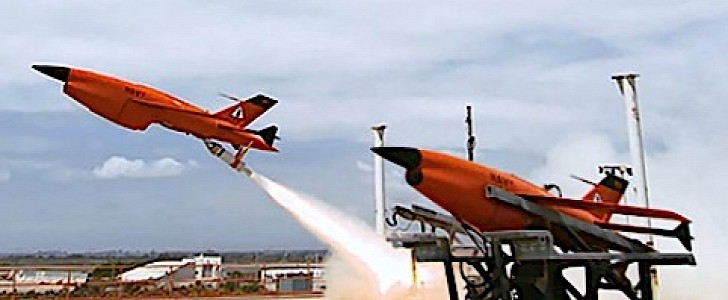Ever since they came onto the scene, military drones have changed combat. We’ve seen that countless times in the past, during various conflicts around the world, and most recently we’re seeing the importance of drones in the clashes over in Ukraine.
But most of the drones we’ve seen so far in action are of the kind that still need human operators. Whenever a drone is flying, somewhere in a bunker a soldier is directing it to its target, telling it what to do and when to shoot.
That will probably change in the not-so-distant future, as more and more defense contractors are looking into giving drones more decision-making capabilities. For now, these efforts seem to be contained to drones meant to support manned aircraft, but it’s not hard to imagine them spilling over to other areas.
Several companies are currently engaged in efforts of teaching drones how to fly alongside piloted aircraft. BAE Systems, for instance, calls this Manned Unmanned Teaming (MUM-T) technology, and it recently demonstrated it at an undisclosed Department of Defense flight test range, with help from the Strategic Capabilities Office (SCO).
According to the defense contractor, the test had “multiple unmanned military platforms” (unclear what platforms were used) in the air at the same time, flying with real mission sensors. Alongside them, an undisclosed manned military aircraft took to the sky, “to execute a combat mission.”
According to BAE, the team of drones worked together to “develop and execute autonomously the necessary tactics to complete the mission.” The pilot in the fighter jet used a human-machine interface to monitor the mission of the drones. During the test, the pilot had the capability to interact with the drones as desired.
The exact targets of the test are not public, but the parties involved claim they have achieved the “primary goal of demonstrating collaborative mission execution in an operationally representative environment.“
“The development of autonomous technology is crucial to protect our warfighters against emerging threats,” said in a statement Ehtisham Siddiqui, vice president and general manager of Controls and Avionics Solutions at BAE Systems.
“This flight test demonstrates our team’s commitment to accelerate the deployment of reliable and innovative manned-unmanned teaming solutions for mission success.”
When fully matured, the MUM-T concept should allow airborne fleets to rapidly add capabilities to “quickly enhance mission effectiveness and counter adversary technology.”
In theory, the technology could be used for civilian applications as well. BAE envisions a world where swarms of collaborative drones could be deployed for firefighting, search and rescue operations, hazmat incidents, and even law enforcement.
At the time of writing, there is no telling when the sight of drones flying alongside piloted aircraft would become a common one in the skies of our world.
That will probably change in the not-so-distant future, as more and more defense contractors are looking into giving drones more decision-making capabilities. For now, these efforts seem to be contained to drones meant to support manned aircraft, but it’s not hard to imagine them spilling over to other areas.
Several companies are currently engaged in efforts of teaching drones how to fly alongside piloted aircraft. BAE Systems, for instance, calls this Manned Unmanned Teaming (MUM-T) technology, and it recently demonstrated it at an undisclosed Department of Defense flight test range, with help from the Strategic Capabilities Office (SCO).
According to the defense contractor, the test had “multiple unmanned military platforms” (unclear what platforms were used) in the air at the same time, flying with real mission sensors. Alongside them, an undisclosed manned military aircraft took to the sky, “to execute a combat mission.”
According to BAE, the team of drones worked together to “develop and execute autonomously the necessary tactics to complete the mission.” The pilot in the fighter jet used a human-machine interface to monitor the mission of the drones. During the test, the pilot had the capability to interact with the drones as desired.
The exact targets of the test are not public, but the parties involved claim they have achieved the “primary goal of demonstrating collaborative mission execution in an operationally representative environment.“
“The development of autonomous technology is crucial to protect our warfighters against emerging threats,” said in a statement Ehtisham Siddiqui, vice president and general manager of Controls and Avionics Solutions at BAE Systems.
“This flight test demonstrates our team’s commitment to accelerate the deployment of reliable and innovative manned-unmanned teaming solutions for mission success.”
When fully matured, the MUM-T concept should allow airborne fleets to rapidly add capabilities to “quickly enhance mission effectiveness and counter adversary technology.”
In theory, the technology could be used for civilian applications as well. BAE envisions a world where swarms of collaborative drones could be deployed for firefighting, search and rescue operations, hazmat incidents, and even law enforcement.
At the time of writing, there is no telling when the sight of drones flying alongside piloted aircraft would become a common one in the skies of our world.






